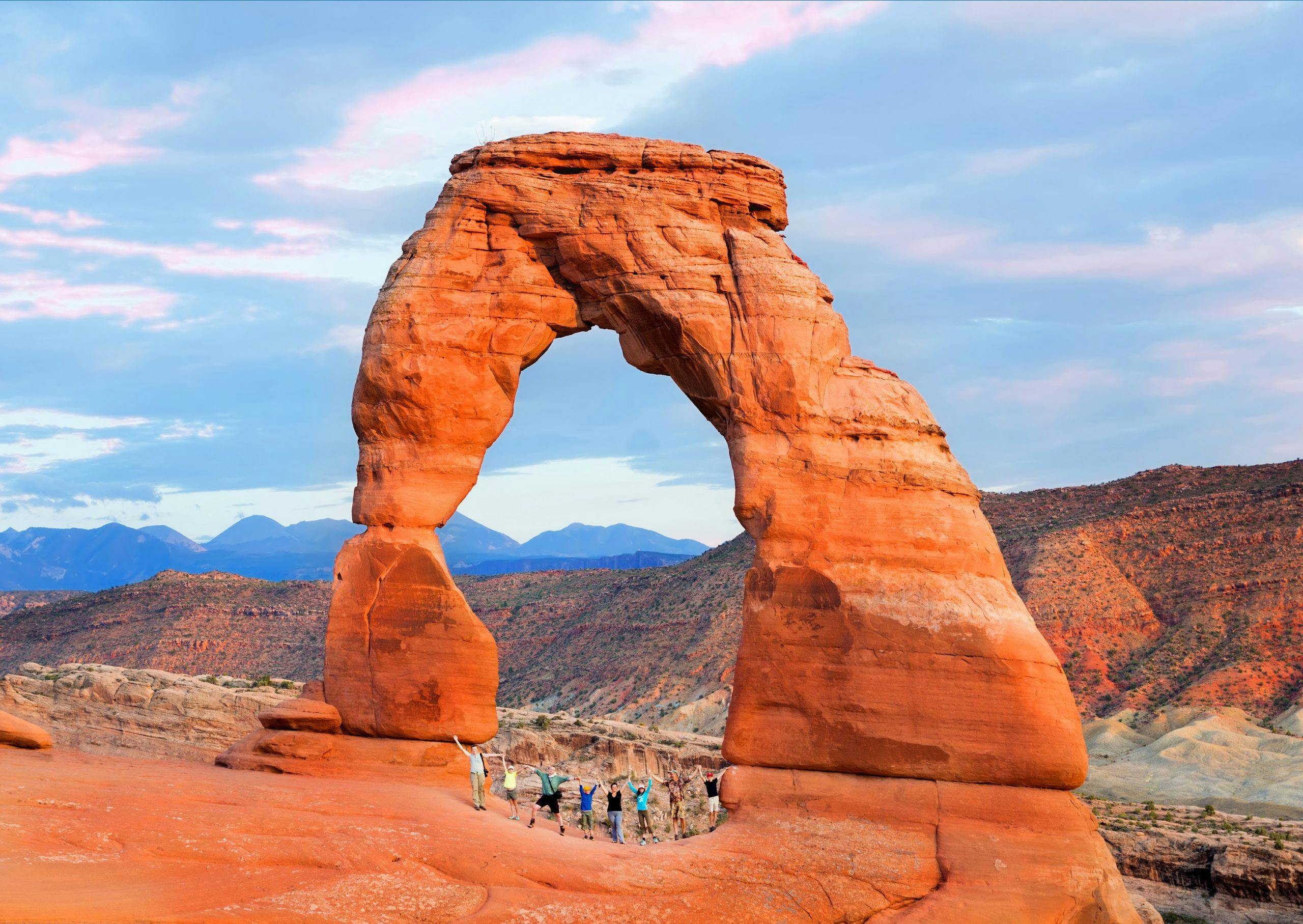Explore Five National Parks in Utah! Utah is home to 5 of the best national parks—Arches, Bryce Canyon, Canyonlands, Capitol Reef, and Zion—collectively known as the Mighty Five. Established between 1919 and 1971, these parks are famous for their spectacular red-rock formations, desert solitude, and more than 1,000 miles of hiking & trekking trails. They are popular with both classic family vacationers and hikers looking to get off the beaten path in terrific instagrammable terrain. Plus, Scenic Byway 12, between Bryce and Capitol Reef, is one of the best drives in the United States!
As travel to Utah’s national parks continues to trend up, we turned to MT Sobek’s adventure travel experts to get the lowdown on these Mighty Five parks in Utah.

1. What are the main differences between Utah’s Mighty Five Parks?
All of the parks contain geologic wonders and four of the five national parks are certified International “Dark Sky” Parks, which means that you can stargaze beneath the Milky Way. The parks are Arches National Park, Bryce Canyon National Park, Canyonlands National Park, Capital Reef National Park, and Zion National Park.
But what’s different? Here’s what you can expect at each park:
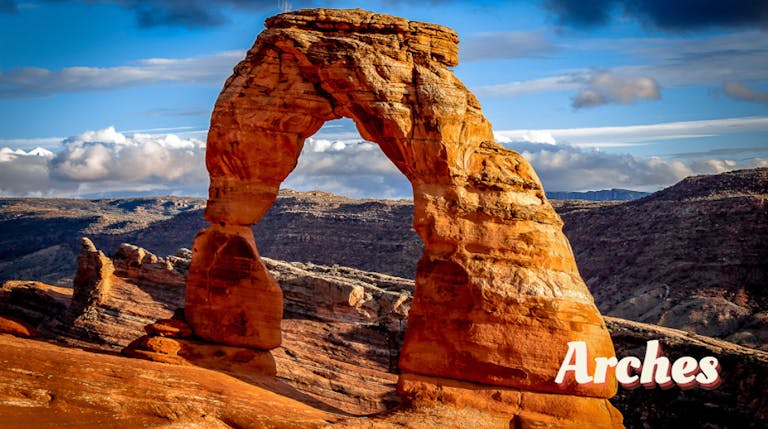
Arches National Park
See more than 2,000 stunning rock arches in an arid desert environment at Arches National Park. Over millions of years the natural sandstone has been worn down by erosion, creating arches such as Delicate Arch, Double Arch, North Window, and Landscape Arch, which spans an impressive 306 feet! These are just a few of the best arches in the park, but there are other amazing geological features too—including the iconic Balanced Rock. Balanced Rock can be accessed on a short hike from the road about 9 miles in from the entrance. Arches National Park is located about 5 miles from the city of Moab, where most Utah adventures begin and end.
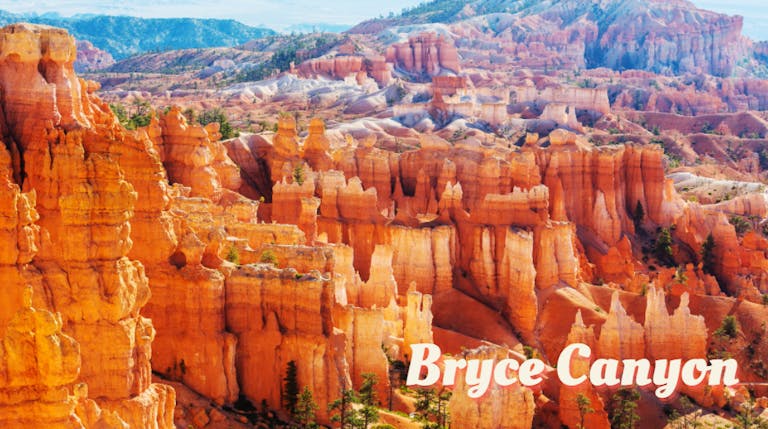
Bryce Canyon National Park
Marvel at fantastical pinnacles and hoodoos in Bryce Canyon National Park. Formed by erosion, the tall, colorful sandstone hoodoos rise like chimneys out of the rugged landscape. The sweeping views from the rim of Bryce’s amphitheater are incredible. From here, hike along the rim trail to Sunset Point and descend into this wild land through a surreal maze of pink hoodoos, spires and rock windows. Bryce Canyon National Park is located about 72 miles (or two hours) northeast of Zion. Both Bryce Canyon and Zion are located in southwest Utah.
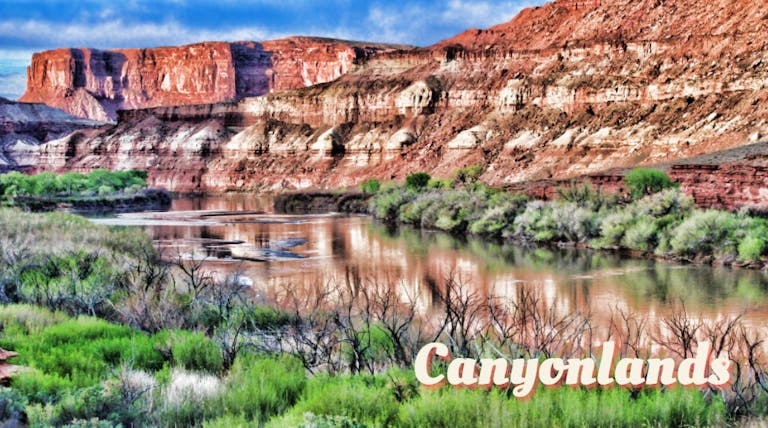
Canyonlands National Park
The Colorado River and Green River, one of Utah’s Mighty Five, have helped to shape the distinctive canyons, buttes, and mesas of beautiful Canyonlands National Park. Explore up close on epic rafting adventures that follow Westwater Canyon past red sandstone spires into narrow Black Granite Gorge, where you can tackle Class III and IV rapids such as Funnel Falls, Last Chance, The Steps, and the infamous Skull Rapid! There are also great hikes to Mesa Arch, and opportunities to marvel at towering rock walls and ancient pictographs. Alternatively, take an easy drive to the Grand View Point lookout from Moab. Canyonlands National Park is located 26 miles from Arches.
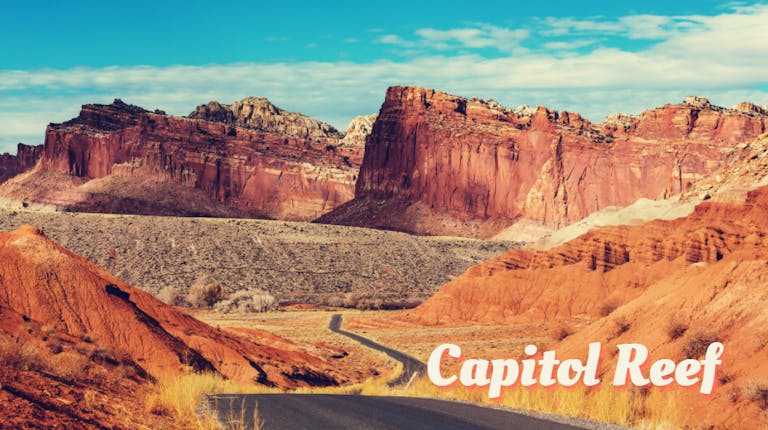
Capitol Reef National Park
Capitol Reef National Park is the least visited of Utah’s Mighty 5, offering visitors not only dramatic desert scenery but also serenity and solitude! Spend the morning hiking the Grand View Wash Trail along the upper portion of the Waterpocket Fold—an incredible 100-mile wrinkle in the Earth’s surface. This geological feature is known as a monocline, which creates a dramatic step-like landscape of sheer cliffs and canyons that give Capitol Reef its angled look. Capital Reef National Park’s scenic drive, accessible at the ‘town’ of Fruita, is a wonderful way to take in the grandeur and access easy hikes into gorgeous canyons. Capitol Reef is located about 130 miles midway between Moab and Bryce Canyon.
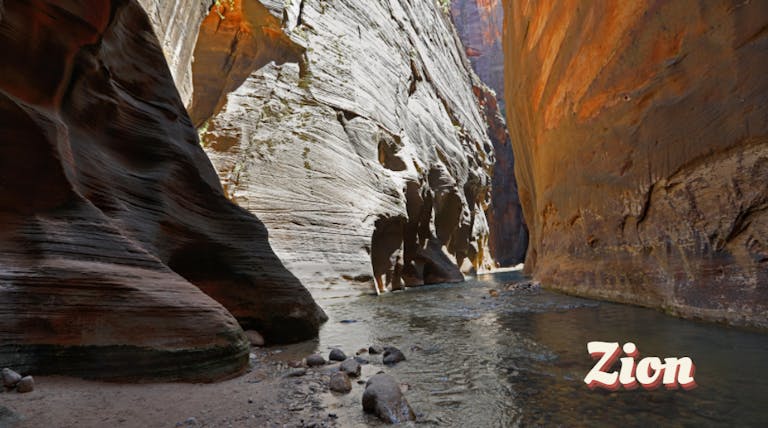
Zion National Park
Zion National Park is Utah’s southernmost park, located where the Colorado Plateau, Great Basin, and Mojave Desert meet. Top activities in Zion include hiking Angel’s Landing (with a permit) and wading through the Virgin River’s narrow slot canyon—our favorite way to spend a day in Zion. Be amazed at the towering canyon walls rising from the water’s edge! You can also explore mesas and rock towers, and take a journey along Zion Canyon Scenic Drive leading to woodland trails along the Virgin River.
Related: Download MT Sobek’s thrilling Utah National Parks Multi-Adventure Tour here!
2. When is the best time to visit Utah’s National Parks?
A hiking adventure through Utah’s five national parks is best in spring or fall, which is May and June or September or October. Temperatures in July and August can get very hot (in the high 90°Fs or higher) and there are usually more school vacationers during this time. In the shoulder seasons, mid-spring and late fall, you can expect milder temperatures in the 60-70°Fs during the day.

3. Where can I stay in the Mighty Five?
There are many great camping options in and around all five parks, but be sure to book ahead to secure reservations as spots are snapped up quickly. Those looking for comfortable hotel accommodations can find excellent lodges, such as the Cliffrose Lodge in Springdale, Utah.

4. Do I need permits to hike backcountry trails?
Utah’s National Parks issue permits for many activities within the parks. Angel’s Landing, one of the most popular hiking destinations in Zion National Park, has a lottery permit process. For MT Sobek guests, trip permits to hike in the parks (e.g. wading the Virgin Narrows) and camping in the backcountry or on the banks of the Colorado River (for rafting adventures) are organized in advance. Visit Utah’s National Park Service website for detailed permit information for backcountry camping and hiking in each park.

5. What should I bring on the hiking trail?
You’re going hiking in Utah’s spectacular canyons, so you need to pack right for a dry, arid and rugged landscape. For day hikes we recommend an 18-30L day bag to cover the essentials. Bring plenty of fluid for hydration and snacks for the trail. Wear sturdy walking boots or shoes for steep, rocky, and sometimes slippery paths. Those hiking the Virgin Narrows in Zion will get wet feet! On MT Sobek trips, guests are properly outfitted for the hike with special footwear, neoprene socks, a hiking pole and a dry day pack. Be prepared for bright sun and bring a sun hat, sunglasses and sunscreen. At night, light up with a head lamp and get out your star chart or star app. The stargazing is incredible!

Your Next Adventure Awaits…Book a Utah Adventure
MT Sobek has more than 10 scheduled and custom adventures in Utah’s national parks, including our popular Utah National Parks Multi-Adventure, which visits all five parks in just eights days, and our Cataract Canyon Rafting Adventure. Learn more about our adventures in Utah and across the globe. Get your free MT Sobek catalog!

